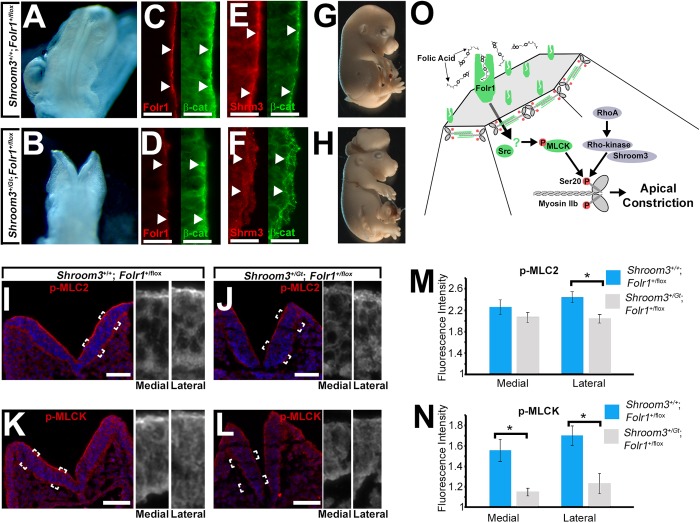Fig. 6.
Apical junction pMLC and pMLCK and neural tube closure are dependent on combined Shroom3 and Folr1 function. (A–B) E9.5 embryos of control and doubly heterozygous embryos (deficient of 1 allele of Shroom3 and Folr1 genes). (C–F) Cryosections through the neural epithelial of E9.5 control and double heterozygote embryos immunofluorescently labeled with antibodies specific for Folr1 and β-catenin or Shroom3 and β-catenin. The arrows mark regions of positive apical β-catenin labeling and show reduction of apical Shroom3 and Folr1 in double heterozygotes. (G–H) E15.5 embryos of control and doubly heterozygous embryos. Note the exencephaly present in the double heterozygotes. (I–L) Cryosections through the neural epithelial of E9.0 control and double heterozygote embryos immunofluorescently labeled with antibodies specific for phosphorylated myosin light chain (pMLC) or phosphorylated myosin light chain kinase (pMLCK) (red) and Hoechst (blue). The hatched boxes indicate regions magnified in the panels to the right. (M–N) The mean apical fluorescent intensity of pMLC and pMLCK was calculated from measurements of several cryosections and depicted in the graph. Asterisks indicate experimental groups with significantly reduced intensities (P<0.01). (O) A model of a proposed pathway by which folic acid exerts its effect on Shroom3-dependent apical constriction.

